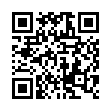|
This article is cited in 3 scientific papers (total in 3 papers)
Artificial Intelligence, Knowledge and Data Engineering
Crop identification using radar images
K. Dubrovina, A. Stepanovb, A. Verkhoturovc, T. Aseevab
a Computing Center of the Far Eastern Branch of the Russian Academy of Sciences
b Far Eastern Agriculture Research Institute of the Russian Academy of Sciences (FEARI)
c Mining Institute of the Far Eastern Branch of the Russian Academy of Sciences (MI FEB RAS)
Abstract:
One of the most important tasks in practical agricultural activity is the identification of agricultural crops, both those growing in individual fields at the moment and those that grew in these fields earlier. To reduce the complexity of the identification process in recent years, data from remote sensing of the Earth (remote sensing), including the values of vegetation indices calculated during the growing season, have been used. At the same time, processing optical satellite images and obtaining reliable index values is often difficult, which is due to cloud cover during the shooting. To solve this problem, the article suggests using the seasonal course curve of the radar vegetation index with double polarization (DpRVI) as the main indicator characterizing agricultural crops. In the period 2017-2020, 48 radar images of the Khabarovsk Municipal District of the Khabarovsk Territory from the Sentinel-1 satellite were received and processed to identify crops in the experimental fields of the Far Eastern Research Institute of Agriculture (FEARI) (resolution 22 m, shooting interval - 12 days). Soybeans and oats were the main identified crops. Pixels of fields not occupied by these crops (forage grasses, abandoned fields) were also added. The series of values of DpRVI were obtained both for individual pixels and fields, and approximated series for three classes. The approximation was carried out using the Gaussian function, the double logistic function, the square and cubic polynomials. It is established that the optimal approximation algorithm is the use of a double logistic function (the average error was 4.6%). On average, the approximation error of the vegetation index for soybeans did not exceed 5%, for perennial grasses – 8.5%, and for oats - 11%. For experimental fields with a total area of 303 hectares with a known crop rotation, the classification was carried out by the weighted method of k nearest neighbors (the training sample was formed according to the data of 2017-2019, the test sample - 2020). As a result, 90% of the fields were correctly identified, and the overall pixel classification accuracy was 73%, which made it possible to identify the discrepancy between the actual boundaries of the fields declared to identify abandoned and swampy areas. Thus, it is established that the DpRVI index can be used to identify agricultural crops in the south of the Far East and serve as the basis for the automatic classification of arable land.
Keywords:
crop identification, vegetation index, remote sensing, modelling.
Received: 29.09.2021
Citation:
K. Dubrovin, A. Stepanov, A. Verkhoturov, T. Aseeva, “Crop identification using radar images”, Informatics and Automation, 21:2 (2022), 405–426
Linking options:
https://www.mathnet.ru/eng/trspy1195 https://www.mathnet.ru/eng/trspy/v21/i2/p405
|

| Statistics & downloads: |
| Abstract page: | 128 | | Full-text PDF : | 126 |
|




 Contact us:
Contact us: Terms of Use
Terms of Use
 Registration to the website
Registration to the website Logotypes
Logotypes








 Citation in format
Citation in format 
